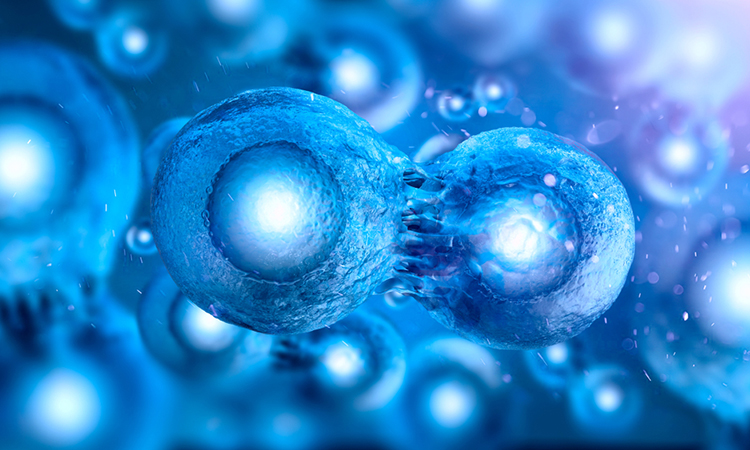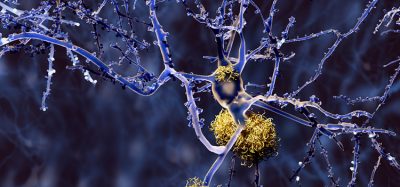Developing in-vivo chimeric lungs with pluripotent stem cells
Posted: 15 January 2024 | Ellen Capon (Drug Target Review) | No comments yet
Reverse-blastocyst complementation elucidates the conditions required to form lungs in rat-mouse chimeric models.


Researchers from the Nara Institute of Science and Technology (NAIST) have used the reverse-blastocyst complementation (rBC) method to understand the conditions required to form lungs in rat-mouse chimeric models. They also used the tetraploid-based organ complementation (TOC) method to create a rat-derived lung in their mouse model.
Chronic obstructive pulmonary disease
Chronic obstructive pulmonary disease (COPD) is the third leading cause of global deaths. The pathogenesis of COPD is based on the innate and adaptive inflammatory immune response to the inhalation of toxic particles and gases. Although tobacco smoking is the primary cause of this inhalation injury, many other environmental and occupational exposures contribute to the pathology of COPD.1
Lung transplantation is the only viable treatment option, yet finding suitable lung donors is difficult. However, regenerative medicine is advancing the development of lungs from pluripotent stem cells (PSCs) using interspecies animal models. Current expectations for realisation of the promise of PSCs are at the highest they have ever been. However, there are many challenges that need to be addressed in order to bring PSC technology within the grasp of many more patients. Three particular challenges are: tumorigenicity, immunogenicity, and heterogeneity.2
PSCs and embryonic stem cells (ESCs) from one species can be injected into blastocytes, the cluster of diving cells made by a fertilised egg, in a biological technique named blastocyst complementation to create interspecies chimeric animals. This has enabled successful regeneration of the heart, pancreas and kidney in rat-mouse chimeras, but functional lung formation remains to be achieved successfully in vitro due to the complex three-dimensional (3D) structures and multiple cell types needed. This has warranted more research into the viable conditions required to generate PSC-derived organs.
Fgf10 and Fgrfr2b
Fibroblast growth factors (FGFs) are polypeptides with various biological activities both in vivo and in vitro.3 The fibroblast growth factor 10 (Fgf10) and its interaction with the Fgf receptor isoform IIIb (Fgfr2b) in the lungs are essential for lung development. The rBC method in the new study involved injecting mutant ESCs which fail to show lung formation into wild-type (WT) embryos. This allowed for efficient detection of mutant PSCs in the recipient tissue, aiding the determination of the conditions necessary for successful lung formation in the organ-deficient animal.
The team, led by Dr Shunsuke Yuri and Dr Ayako Isotani, discovered that WT ESCs provide uniform contributions across target and non-target organs in the chimeras. This helped to ascertain that a particular number of WT or normal cells are required to overcome the lung development failure in Fgf10-deficient or Fgfr2b-deficient animals.
Having this understanding enabled them to produce rat-derived lungs in the Fgfr2b-deficient mouse embryos with the TOC method, without the requirement of producing a mutant mouse line. Dr Yuri said: “Interestingly, we found that the rat epithelial cells conserved intrinsic species-specific timing in the interspecies model, resulting in an underdeveloped lung.” Consequently, these lungs remained nonfunctional post-birth.
The study’s findings identified the factors required for the successful generation of functional lungs in rat-mouse interspecies chimeras, as well as the issues to overcome. Dr Yuri concluded: “We believe that our study makes an important contribution to the literature by presenting a faster and more efficient method of exploring blastocyst complementation.”
“These novel results can significantly advance the progress toward developing in-vivo chimeric lungs for the purpose of transplantation, which could transform the practical application of regenerative medicine.”
This study was published in Development.
References
1 Hogg JC, Timens W. The Pathology of Chronic Obstructive Pulmonary Disease. Annual Review of Pathology: Mechanisms of Disease. 2008 October 27 [2024 January 5]; 4:435-459. Available from: https://doi.org/10.1146/annurev.pathol.4.110807.092145
2 Yamanaka S. Pluripotent Stem Cell-Based Cell Therapy – Promise and Challenges. Cell Stem Cell. 2020 October 1 [2024 January 5]; 27(4):523-31. Available from: https://doi.org/10.1016/j.stem.2020.09.014
3 Birnbaum D, Coulier F, Emoto H, Itoh N, Mattei MG, Tagashira S. Structure and Expression of Human Fibroblast Growth Factor-10*. Journal of Biological Chemistry. 1997 September [2024 January 2024]; 272(37):23191-4. Available from: https://doi.org/10.1074/jbc.272.37.23191
Related topics
Animal Models, Regenerative Medicine, Stem Cells
Related conditions
Chronic obstructive pulmonary disease (COPD)
Related organisations
Nara Institute of Science and Technology (NAIST)
Related people
Dr Ayako Isotani (NAIST), Dr Shunsuke Yuri (NAIST)







